TROJ_CRYPCTB.A
Ransom:Win32/Critroni.A (Microsoft), Trojan.Cryptolocker.G (Symantec), Trojan-Ransom.Win32.Crypren.pwj (Kaspersky)
Windows 2000, Windows Server 2003, Windows XP (32-bit, 64-bit), Windows Vista (32-bit, 64-bit), Windows 7 (32-bit, 64-bit)


Threat Type: Trojan
Destructiveness: No
Encrypted: Yes
In the wild: Yes
OVERVIEW
This CryptoLocker variant uses Tor to mask its C&C communications.
To get a one-glance comprehensive view of the behavior of this Trojan, refer to the Threat Diagram shown below.
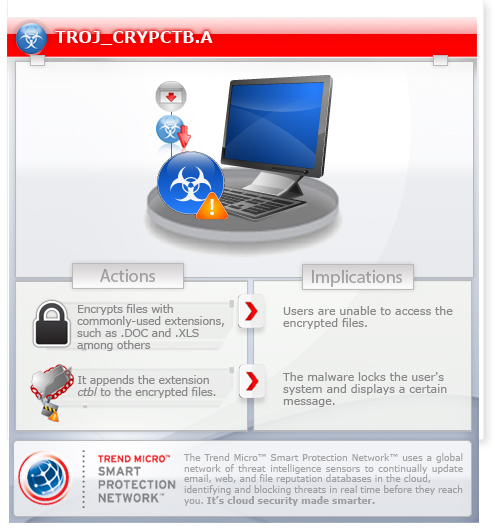
This Trojan arrives on a system as a file dropped by other malware or as a file downloaded unknowingly by users when visiting malicious sites.
TECHNICAL DETAILS
Arrival Details
This Trojan arrives on a system as a file dropped by other malware or as a file downloaded unknowingly by users when visiting malicious sites.
Installation
This Trojan drops the following files:
- %User Profile%\My Documents\{random filename 2}.html - contains list of encrypted files
- %User Profile%\My Documents\AllFilesAreLocked{number}.bmp - wallpaper used by the malware
- %User Profile%\My Documents\DecryptAllFiles{number}.txt - contains the ransom note
- %Windows%\Tasks\{random filename 3}.job
(Note: %User Profile% is the current user's profile folder, which is usually C:\Documents and Settings\{user name} on Windows 2000, XP, and Server 2003, or C:\Users\{user name} on Windows Vista and 7.. %Windows% is the Windows folder, which is usually C:\Windows.)
It drops the following copies of itself into the affected system:
- %User Temp%\{random filename 1}.exe
(Note: %User Temp% is the current user's Temp folder, which is usually C:\Documents and Settings\{user name}\Local Settings\Temp on Windows 2000, XP, and Server 2003, or C:\Users\{user name}\AppData\Local\Temp on Windows Vista and 7.)
Other System Modifications
This Trojan modifies the following registry entries:
HKEY_CURRENT_USER\Control Panel\Desktop Wallpaper
(Default) = "%User Profile%\My Documents\AllFilesAreLocked{number}.bmp"
(Note: The default value data of the said registry entry is {user-defined}.)
It sets the system's desktop wallpaper to the following image:

- It asks for users to download TOR and connect to the given URL to retrieve the private key for decryption
Other Details
This Trojan encrypts files with the following extensions:
- xlsx
- xlsm
- xlsb
- xls
- xlk
- txt
- sql
- safe
- rtf
- pwm
- pem
- mdf
- mdb
- kwm
- groups
- docx
- docm
- doc
- der
- dbf
- db
- crt
- cer
NOTES:
This Trojan appends the extension ctbl to the encrypted files.
It displays the following ransom message:
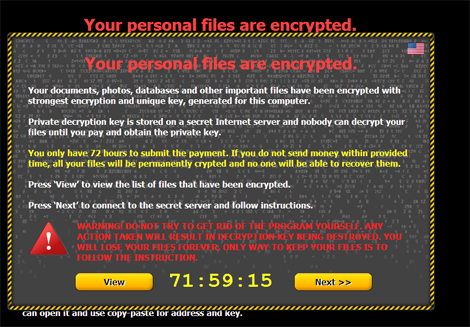
It asks the user to pay via Bitcoin payment:
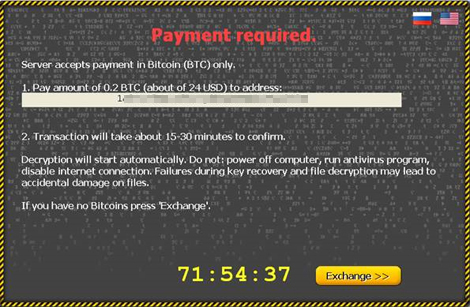
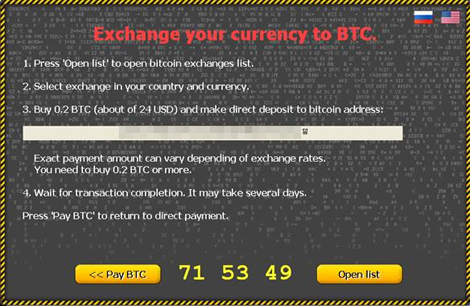
It displays the following pages upon opening the given URL in TOR browser:
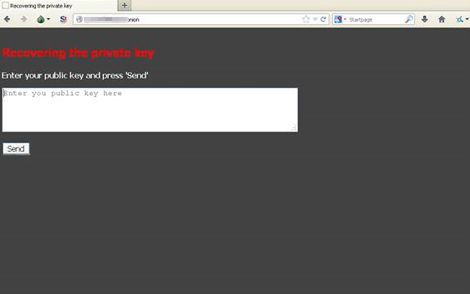
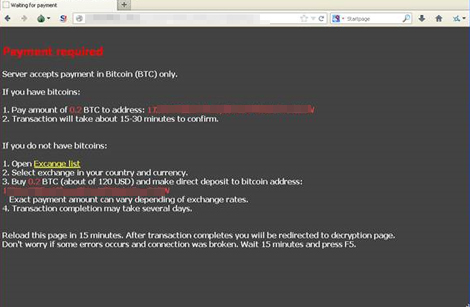
SOLUTION
Step 1
Before doing any scans, Windows XP, Windows Vista, and Windows 7 users must disable System Restore to allow full scanning of their computers.
Step 2
Identify and terminate files detected as TROJ_CRYPCTB.A
- Windows Task Manager may not display all running processes. In this case, please use a third-party process viewer, preferably Process Explorer, to terminate the malware/grayware/spyware file. You may download the said tool here.
- If the detected file is displayed in either Windows Task Manager or Process Explorer but you cannot delete it, restart your computer in safe mode. To do this, refer to this link for the complete steps.
- If the detected file is not displayed in either Windows Task Manager or Process Explorer, continue doing the next steps.
Step 3
Restore this modified registry value
Important: Editing the Windows Registry incorrectly can lead to irreversible system malfunction. Please do this step only if you know how or you can ask assistance from your system administrator. Else, check this Microsoft article first before modifying your computer's registry.
- In HKEY_CURRENT_USER\Control Panel\Desktop Wallpaper
- From: (Default) = "%User Profile%\My Documents\AllFilesAreLocked{number}.bmp"
To: (Default) = "{user-defined}"
- From: (Default) = "%User Profile%\My Documents\AllFilesAreLocked{number}.bmp"
Step 4
Search and delete these files
- %User Profile%\My Documents\{random filename 2}.html - contains list of encrypted files
- %User Profile%\My Documents\AllFilesAreLocked{number}.bmp - wallpaper used by the malware
- %User Profile%\My Documents\DecryptAllFiles{number}.txt - contains the ransom note
- %Windows%\Tasks\{random filename 3}.job
Step 5
Scan your computer with your Trend Micro product to delete files detected as TROJ_CRYPCTB.A. If the detected files have already been cleaned, deleted, or quarantined by your Trend Micro product, no further step is required. You may opt to simply delete the quarantined files. Please check this Knowledge Base page for more information.
Did this description help? Tell us how we did.


